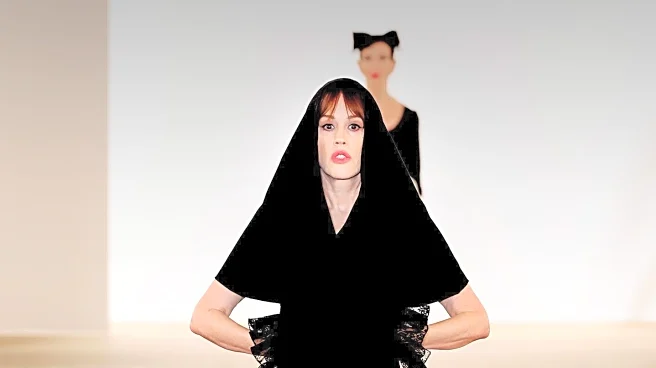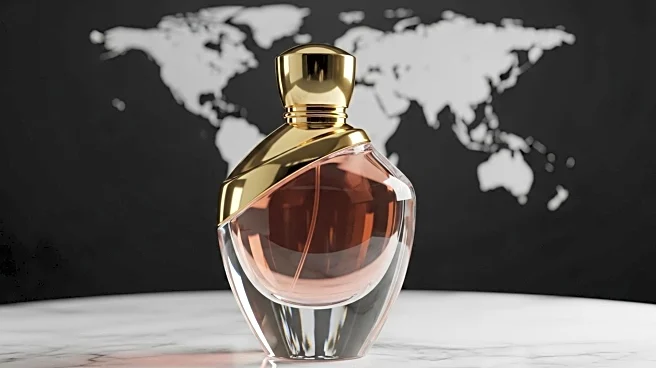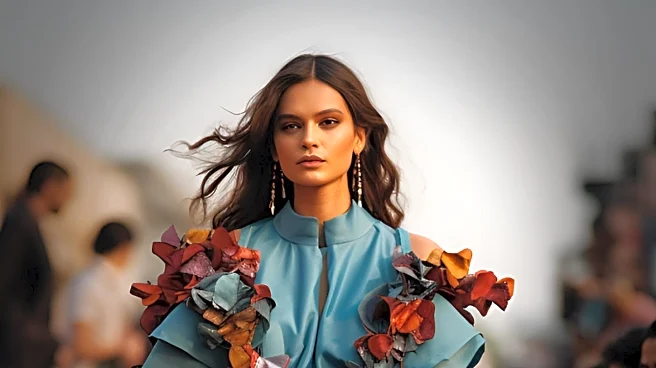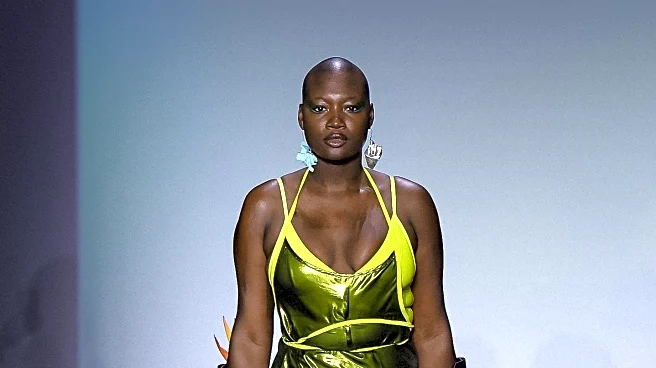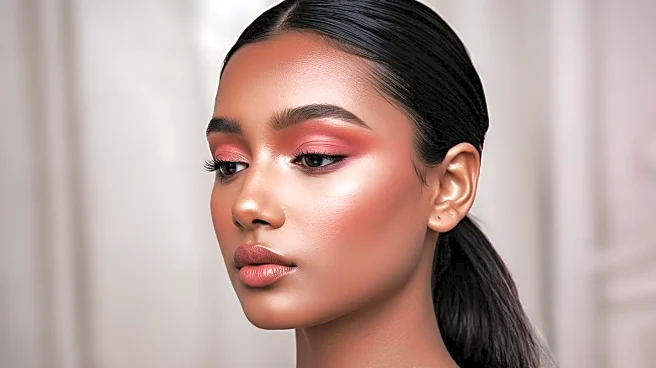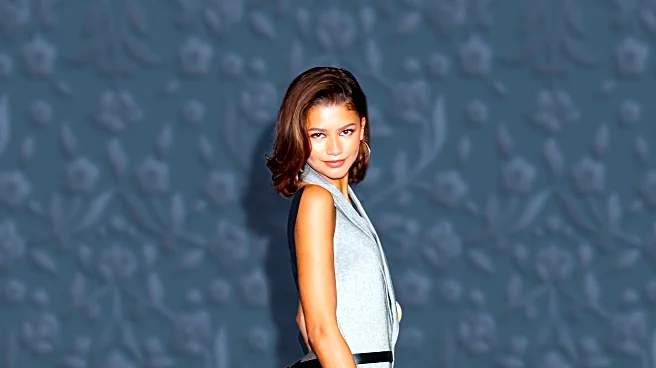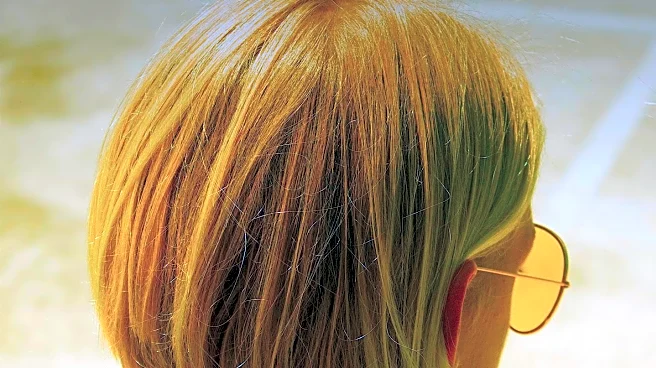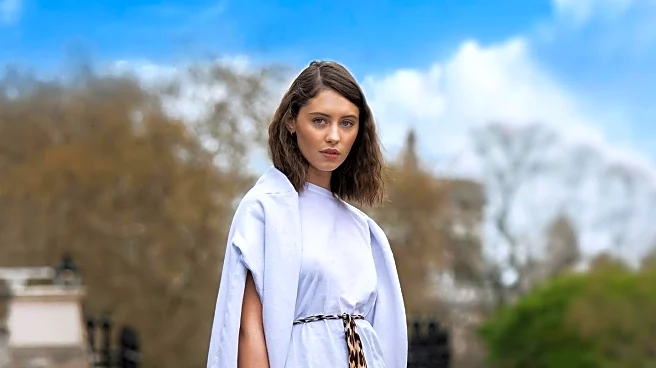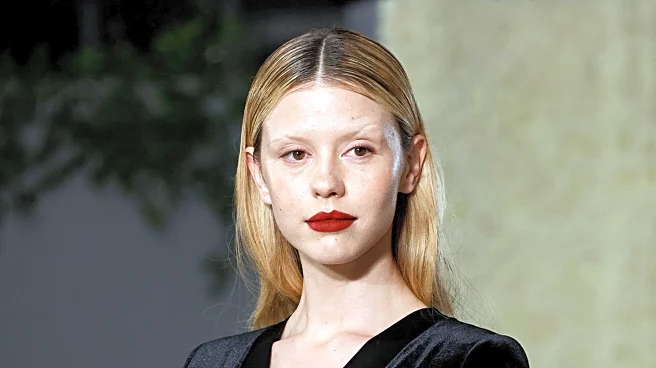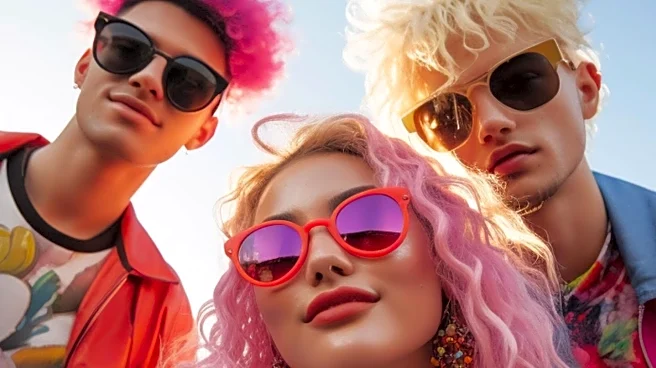What's Happening?
Simone Rocha's Spring 2026 fashion show, held at the opulent St Stephen Walbrook Church, showcased a collection that embraced debutante dressing and a dreamy soundtrack. Makeup artist Thomas de Kluyver emphasized the use of makeup as a fashion accessory rather than a mask. The models' skin was prepared with Dr Barbara Sturm products to achieve a satin texture, and Byredo makeup was used to create three striking lip looks. These included a vivid berry-pink flower design, a 'sweet dream' transfer, and a lacquered black lip with shimmer. The show reflected a playful approach to makeup, aligning with emerging trends seen in New York, and anticipated to continue in Milan and Paris.
Why It's Important?
The emphasis on makeup as a fashion accessory marks a shift in the beauty industry, encouraging creativity and individuality. This approach allows consumers to express themselves through makeup, complementing their outfits and personal style. The trend towards playful and bold makeup designs could influence future fashion and beauty collaborations, driving innovation in product development. As designers become more daring, this could lead to a broader acceptance of unconventional beauty standards, impacting consumer preferences and industry marketing strategies.
What's Next?
The playful makeup trend is expected to continue in upcoming fashion shows in Milan and Paris, potentially influencing global beauty standards. Designers may increasingly incorporate bold makeup looks into their collections, encouraging consumers to experiment with their own styles. This could lead to new product launches from beauty brands aiming to capitalize on the trend. Additionally, fashion and beauty collaborations may become more prevalent, as brands seek to align with this emerging aesthetic.
Beyond the Headlines
The shift towards makeup as a fashion accessory highlights a cultural change in how beauty is perceived. It challenges traditional notions of makeup as a tool for concealment, promoting it as a form of self-expression. This could lead to a broader acceptance of diverse beauty standards, encouraging inclusivity within the industry. As consumers embrace this trend, it may also influence social media content, with individuals showcasing their unique makeup styles as part of their personal brand.

